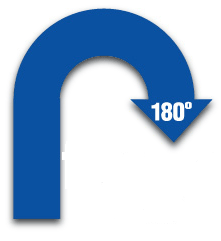 As a leader, do you find yourself overwhelmed with the varied tasks it takes to run your organization?
As a leader, do you find yourself overwhelmed with the varied tasks it takes to run your organization?
Do you feel the need to be involved in all the daily inner workings and daily execution of tasks?
Then a solution might be at hand if you take the advice of J. Keith Murnighan, professor of management and organizations at the Kellogg School of Management.
In his book Do Nothing!: How to Stop Overmanaging and become a Great Leader, Murnighan advises to step back from your daily operations.
Empower your staff to handle and make the decisions that make the wheels go around in your organization.
This does several things:
This is the key difference between being the boss and leading your organization.
Michael Gerber’s books revolve around the concept of working on your business rather than in your business, in other words, transitioning from a technician to a leader.
But back to Murnighan, he identifies the three key roles in leadership:
He claims that by focusing on these three skill sets, you then do nothing when it comes to the every day business. In other words, focus on getting your team to it’s maximum potential so it can do what it needs to do to be successful without relying on your presence.
This isn’t an easy thing to do because more than likely, if you are leading an organization, you are doing it because you are passionate about the work the organization does. You’ve risen to the top, or founded it because of the mission. But now, you are leading and your role changes significantly, away from the technical aspects of the work and more towards the strategic outlook.
What will this accomplish? It frees you up to watch the bigger picture. Now you can think about the future, your long-term plans, innovating, and staying ahead of industry trends. It creates a motivated and productive team which in the end, is a reflection on the leader.
What do you think? Do you agree with Murnighan's assertions? Can you let go?
 Sometimes the company mission is just academic. It’s less important than the company’s positioning.
Sometimes the company mission is just academic. It’s less important than the company’s positioning.
Tracy Streckenbach, president and chief operating officer of Innovative Global Brands, shared some insight like the one above about how to affect change in organizations.
Tracy’s philosophy is to focus on processes and technology to effectively turn around companies. She spends two years with a company to help create the new structure and put on a track for fast growth, hand it off to someone, and move on to the next one.
Have you ever been in position of turning around your company? What leadership advice would you add?
Image courtesy of revitalizationpartners.
 A while back we talked about measuring what matters. We briefly talked about key performance indicators (KPIs) and how they measure the quality of performance and assist in developing performance goals and strategies on both the individual and organizational levels.
A while back we talked about measuring what matters. We briefly talked about key performance indicators (KPIs) and how they measure the quality of performance and assist in developing performance goals and strategies on both the individual and organizational levels.
We came across an article on Industry Week on how to select the best KPIs to drive operational improvement. In it, author Jason Piatt says the key to success is selecting KPIs that will deliver long-term value to the organization.
Piatt says managers have a habit of adding KPIs but not converting the list to the appropriate size to drive strategic intent. Not everything needs to be measured, so focus on the really important things to help your business grow.
KPIs should measure performance toward the strategic objectives of the business. They should be measuring the most important factors in achieving your goals and being successful.
Make sure your measurement system is valid. Priatt suggests validating the repeatability and reproducibility of your measuring system.
Everyone in your organization, on all levels, should be able to relate to the metrics. Piatt says KPIs, such as overhead absorption percentages, are common, but they aren’t necessarily effective for production personnel. He suggests using metrics such as units shipped per hours worked if your objective is to increase production and/or reduce hours per unit.
To obtain the strategic objectives or goals you have set, the KPIs you choose must be controllable. Piatt says this is often forgotten in a successful operational strategy. He suggests asking yourself, “Is the individual empowered to make necessary changes in order to drive performance of the KPI?” If they aren’t, change it so your team is able to meet their objectives.
Business leaders can be inundated with data and sometimes don’t know where to look first. Choosing the right KPI isn’t always easy so use these tips to help you along the way. Like we’ve said before, it’s important to have a broad range of metrics that enable you to assess the performance and understand why you are performing as you are.
What other tips would you add?
Image: stevenharris via Flickr, CC 2.0
 We talk frequently about looking to the future; being a visionary leader. It’s crucial in order to stay relevant in a quickly changing marketplace.
We talk frequently about looking to the future; being a visionary leader. It’s crucial in order to stay relevant in a quickly changing marketplace.
Kevin Eikenberry’s post on Chin Up Leadership, therefore struck a chord.
According to Kevin, a visionary leader should keep his or her chin up and look to the future, and therefore, the bigger picture.
“You must look to the future, connect current work to the long-term strategy, and you must be able to survey the environment in which you and your team are operating.”
Turns out if you’re busy with your head down, pointed at your computer screen and your to-do list, you won’t be able to do any of that.
What things would you add to keep looking forward?
 Poker can be very addictive for some and highly intelligent for others. In fact, there are several parallels found between success playing poker and running an auto industry business.
Poker can be very addictive for some and highly intelligent for others. In fact, there are several parallels found between success playing poker and running an auto industry business.
Like poker players, auto industry business leaders use logic and reason to make strategic decisions and they know how to calculate risk. They know how big the market is and how much they hope to conquer.
An article in Fast Company talked about how to know if you’re the fish or the shark at the table. Here are the lessons they provided that business leaders can apply throughout their careers:
In Texas Hold’em, you are dealt two cards you can see but your opponents can’t. Each player has control of the situation, they either decide to be in the hand or fold.
As a business leader, you are in control at the start of any situation. You decide to do something or you don’t. Whether it’s responding to an email, seeing a sales rep, or hiring an employee, you either fold or stay in the hand.
In poker, understanding the power position is the most important because you are able to make decisions after you’ve gathered information from your opponents.
In business, when a competitor declares what they want first, you have information they don’t. In poker terms, you have the power of position. In business and in poker, it’s that ability to use your power of position regardless of the strength of your hand which separates the good players from the great ones.
In poker and in business, calculating the odds and expectations are important. In poker you don’t have to be a math genius. Poker players base decisions on expected value. The calculation doesn’t ensure every hand will be profitable, however as long as a player plays hands with positive expectations and folds hands with negative expectations, they will be profitable in the long run.
Business leaders do something similar with decision trees. They assign each branch with probabilities and likely profits and choose the branch with the highest expected value.
Poker players watch and learn how their opponents play and make adjustments to how they are playing. Business leaders do the same. They both need to learn the comfort zone of their competitor so they can adjust to take advantage of their competitor’s style.
Poker players want as many opponents as possible when they have a great hand. They slowly put their chips in the pot and never bet so much their opponent would fold. They want to make the pot as large as possible. Then in the last round of betting, they put all of their chips in.
In business, they apply the same approach. When a business leader knows they have an exceptional product no competitor can match, they expand the market during the introduction and early growth phase by alluring competitors to invest in promotion and advertising. Once the pot is as large as possible, they put all of their chips in and go for market domination.
The most important lesson you can learn in poker, is looking at everything through your opponent’s eyes. They don’t make decisions on what they have in their hands, but rather what their opponent has.
When a business leader sees through the eyes of the customers, competitors, their employees, and stakeholders, they discover the “truth in their error” or “the error in our truth” according to the Fast Company article. Once you’re able to see through the eyes of others, decisions become much easier.
What business lessons from playing poker would you add?
Image: BaileyRaeWeaver via Flickr, CC 2.0
 Growing your business isn't a goal. It’s a necessity for your business’s survival. Every business needs to keep and grow customers. Getting the word out about your business and attracting customers is just as important as having a great product or service.
Growing your business isn't a goal. It’s a necessity for your business’s survival. Every business needs to keep and grow customers. Getting the word out about your business and attracting customers is just as important as having a great product or service.
Kelly McDonald wrote an article for Fast Company about how to attract different groups of customers.
Many people will find you online, visit your website, or visit your social media networks. McDonald says to make sure your website and social media pages are welcoming to diverse groups. “People always want to identify with someone who looks like them, so be certain you display a range of representation when it comes to showing people,” McDonald says.
McDonald says to reach out to customers you don’t already have, sometimes you need to tweak your product or service. A few ideas include:
Diversify your product or service so you have multiple streams of income that can increase sales and margins.
McDonald says hiring diverse talent is your “single best tactic” for creating a wonderful customer experience. She says, “Who knows better than a Gen Y person what another Gen Y person may want, need, or value? A bilingual employee who speaks Spanish as well as English will be a huge asset, because he or she is likely to understand the culture, not just the language.”
Perceptions of your service are created by a diverse set of experiences. When you hire a diverse group of people you reach new customers by word-of-mouth because your employees all have a network of their own family and friends who they speak with about their job and what their company does.
There are many different marketing tools and tactics for you to consider when you market to a new customer group including:
Customers expect companies to stand by their products and services. Inc. offers seven rules for fantastic customer service:
The customer experience should continue after the sale has been complete. For customers to remain loyal and become advocates they need to continue to have great experiences with your company, products, and services.
Successful growth of a profitable customer base is driven by a combination of tools and techniques.
Focusing on widening your customer base is smart because customers often come in groups, each individual with a different want and/or need.
How have you diversified your customer base?
 As a leader, it’s easy to lose sight on the framework of thinking strategically if you have a culture where you are pulled in too many directions, and mired in the actual operations of the business.
As a leader, it’s easy to lose sight on the framework of thinking strategically if you have a culture where you are pulled in too many directions, and mired in the actual operations of the business.
In The Strategist: Be the Leader Your Business Needs, Cynthia Montgomery asks leaders to consider four questions in the context of leading strategy in your organization:
According to Montgomery, being a strategist means living these questions.
They are powerful questions because they force us to think from a larger perspective. Notice, none of the questions pertain to a specific product or service; they define the very purpose of your organization.
And a clear purpose is the foundation of any strong and strategic organization.
In this Harvard Business Review book review, IKEA’s strategy is cited as an excellent example. Founder and CEO Ingvar Kamprad set out to build something that provides “a better everyday life for the many.”
Being clear in purpose is, of course, only the beginning.
Now you, as the strategy leader, have to take words on paper and transform them into a living, breathing organization; one that deconstructs silos and empowers employees of all levels because they have clear direction and are able to participate in the strategic direction.
Leading strategy is an ongoing endeavor. Many organizations have exploded in growth only to fade away due to lack of purpose and foresight. A change in technology might force you to change your product line, but in no way should affect your core strategy.
And that is the key.
The continued existence of a company depends on it’s ability to have a clear purpose. The leader, therefore, is the steward of this purpose; the one who brings it to life in organizational execution.
Does your organization have a clear purpose? Please share it in the comments.
 Some of us are born to lead; it’s something that is seemingly built into our DNA.
Some of us are born to lead; it’s something that is seemingly built into our DNA.
For others however, there is a desire to lead an organization but perhaps the traits aren’t as inherent. It’s something that needs to be developed and nurtured.
As leaders of our own organizations, it is up to us to be able to spot potential leaders in the ranks of our teams.
People and talent are critical to the success of your business. Therefore, it’s important to be constantly on the watch for rising stars so they can be properly coached and retained, and shown that opportunities for growth do exist.
Andy Trainer identifies 6 signs of a natural leader. These are symptoms, if you will, or flags to watch for in your potential up-and-comers.
They Ask a Lot of Questions
Like your 6-year old son, this might be endearing or it might get tiring. Nevertheless, a potential leader questions the way things are done rather than just sticking with the status quo. While it might be a disruption, it’s certainly a trait to be respected.
They’ll Always Have New Ideas
The natural leader always thinks they have a better way of doing things. This may or may not be a positive thing. If reined in appropriately, having someone on the team that is keeping an eye on better, more creative, or cost-effective alternatives is always a good thing.
They Like to Help Others
Your natural leader wants the team to succeed. He/she will work with others to get the job done.
They Take Initiative
Watch the dynamics of your team. If you notice that one person seems to be the go-to person for everyone else on the team, ask yourself why that is. It might not necessarily be because they are the expert, but more because they know how to solve problems, and get things done. Sounds like a good potential leader, doesn’t it?
They Command Respect
Because of the above points, the natural leader has an important presence in the team, commanding respect and getting noticed.
By keeping a keen eye on your team dynamics and identifying potential future leaders, you can then take the initiative to groom them further to fit your organizational culture. They will appreciate being noticed and it will motivate the to constantly do better knowing there are opportunities for them; a future.
You, on the other hand, will have become more observant about your staff, and will be better positioned to understand what might seem like a difficult employee and turn the situation around to retaining and coaching a long-term, loyal, and important team member.
What do you think? Would you add any traits to this list?
Thanks to Chief Happiness Officer for the image.
 If one searches for lists of the top characteristics of leaders, it is likely that many would include confidence. This makes sense: If leaders are uncertain about themselves and their decisions, how can they instill confidence in their employees? It seems a confident leader could readily inspire, self-assuredly take risks, and assertively address organizational conflicts and issues.
If one searches for lists of the top characteristics of leaders, it is likely that many would include confidence. This makes sense: If leaders are uncertain about themselves and their decisions, how can they instill confidence in their employees? It seems a confident leader could readily inspire, self-assuredly take risks, and assertively address organizational conflicts and issues.
What if a confident leader was asked to rate her competence? Would she over-estimate, under-estimate, or fairly assess her level of competence?
Interesting question.
What are the chances that a confident leader is overly-confident in certain areas due to the fact that she is confident to begin with?
In many intellectual and social domains, most people tend to overestimate their abilities. They tend to believe they are better than average. This is referred to as the Dunning-Kruger Effect.
Those who overestimate their abilities face two major consequences. First, they lack the insight to recognize their true or objective competence level. Second, their lack recognition of this fact may lead them to make poor decisions.
Jack Zenger and Joseph Folkman published their results of a study that asked leaders to evaluate their coaching competence.
Data was collected from a pool of 3,761 leaders. Participants were asked to self-assess their coaching competence. After their self-assessment, their coaching competence was evaluated by others.
On average, leaders who were confident in their coaching competence tended to overrate their abilities in the self-assessment. They scored below average (by others) in coaching effectiveness (32nd percentile).
Leaders who underrated their coaching proficiency scored above average (by others) in coaching effectiveness (57th percentile).
We assume confidence comes from competence.
It’s an assumption we cling to regardless of whether we are choosing a handyman, an accountant, or a mechanic.
This assumption also occurs in the workplace. It manifests itself through hiring decisions, and our assessments of our coworkers, direct reports, and superiors.
The assumption is simply wrong.
As we have seen, a confident leader or a leader who has poor self-assessment skills, or is trying to compensate for a certain ignorance is frequently one who over-assesses his abilities.
If confidence is not a great indicator for competence, what is?
If confidence has mixed reviews when determining a leader’s competence, what characteristics of a leader may indicate a better measure of competence or at least the likelihood that this leader is not suffering from an overestimation of abilities? Three characteristics immediately come to mind.
To avoid the Dunning-Kruger Effect, a leader must continually evaluate his/her strengths and weaknesses. No leaders have all the answers. Many competent leaders are aware of this fact.
Self-awareness is important for leadership. Know your blind spots. Remember mistakes and learn from them. Do you lack these insights? Then try these free online tests Myers Briggs, DISC, and Strengthsfinder.
True or deep listeners have the ability to listen intuitively to someone’s conversation while evaluating its true depth and meaning.
The good listener listens to discover “How can I help the other person?”
Ask for feedback and constructive criticism from everyone: Coworkers, subordinates, customers, and even friends. Ask that it be unfiltered and honest. Each criticism allows for self-growth and self-awareness.
Notice how the three measures of competence above involve external sources, which help inform your internal self-assessment.
They provide the dose of objectivism you need to continue along the path of competent leadership and avoid the pitfalls of the Dunning-Kruger Effect.
As Bertrand Russell once said: “One of the painful things about our time is that those who feel certainty are stupid, and those with any imagination and understanding are filled with doubt and indecision.”
Image Credit: Shutterstock
